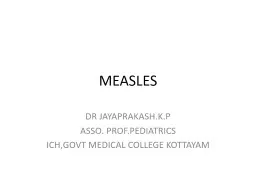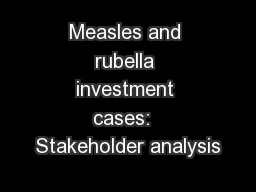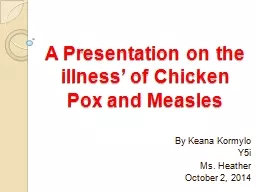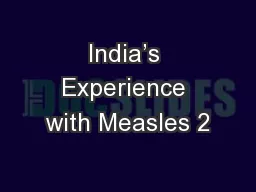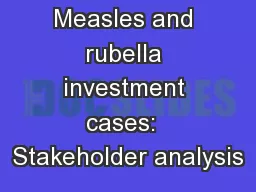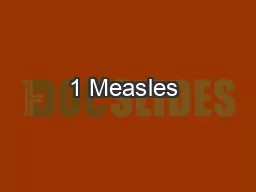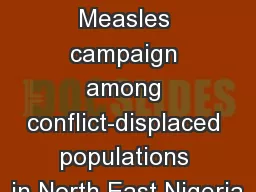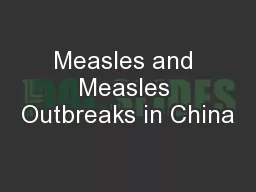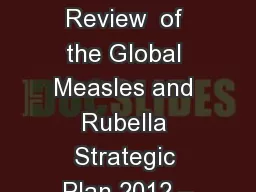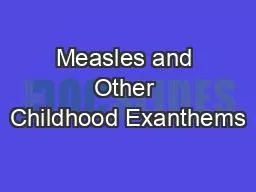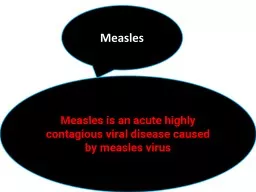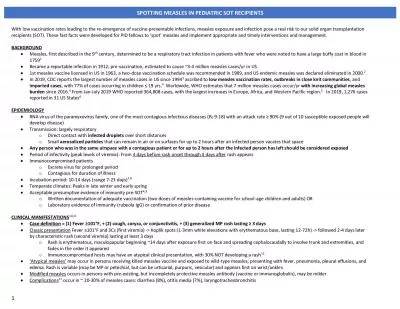PPT-MEASLES DR JAYAPRAKASH.K.P
Author : luanne-stotts | Published Date : 2018-02-15
ASSO PROFPEDIATRICS ICHGOVT MEDICAL COLLEGE KOTTAYAM LEARNING OBJECTIVES To list essential features of clinical measles To list 2 complications of measles To write
Presentation Embed Code
Download Presentation
Download Presentation The PPT/PDF document "MEASLES DR JAYAPRAKASH.K.P" is the property of its rightful owner. Permission is granted to download and print the materials on this website for personal, non-commercial use only, and to display it on your personal computer provided you do not modify the materials and that you retain all copyright notices contained in the materials. By downloading content from our website, you accept the terms of this agreement.
MEASLES DR JAYAPRAKASH.K.P: Transcript
Download Rules Of Document
"MEASLES DR JAYAPRAKASH.K.P"The content belongs to its owner. You may download and print it for personal use, without modification, and keep all copyright notices. By downloading, you agree to these terms.
Related Documents

